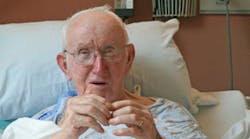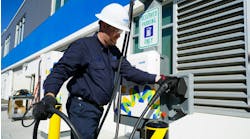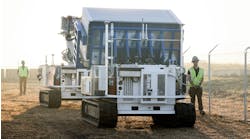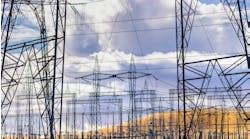In the 1960s, a group of surgeons and anesthesiologists in Arizona came up with a revolutionary concept that would forever change the face of medicine: Perform a surgery that administered general inhalation anesthesia but did not require the patient to remain in the hospital overnight. Because prepping, surgery, recovery, and discharge were carried out in less than 24 hr, the benefits of this innovative idea were numerous, including shorter recovery time, lower total cost for the procedure, and less exposure to infectious germs. Out of this new trend, the ambulatory surgical center was born.
Over the last 20 years, many nursing homes have also experienced a major change relating to the condition of their residents. The biggest difference between now and then is that the “nursing care” of yesterday is becoming more involved in the “medical care” of today. Although general surgery using inhalation anesthetics has not yet started in nursing homes, many resident rooms now look very much like hospital patient rooms or ambulatory surgical center recovery rooms.
Although the furnishings may look like home, beds for many of these patients are now of the hospital variety, and electro-medical devices of almost every kind — from pumps that administer fluids to respirators and patient monitors (with piped medical gas outlets next to eight to 10 electrical receptacles) — are readily seen. This level of care, which had previously been carried out only in hospitals, is now finding its way into many nursing homes. What's the reason for this change? Many hospital patients are not stable enough to be discharged to their homes; however, they can be treated in a nursing home environment, which is less expensive than remaining in a hospital.
Despite its advantages, there are some consequences to this new level of care in nursing homes, including issues with the electrical distribution system requirements as well as the level of emergency power necessary. Before we look to the current and future power needs of these facilities, it's important to know where we've been.
Original outlook on electricity
Back when nursing homes provided only nursing care, residents were not treated to the extent where they became incapable of “self preservation in an emergency.” In addition, residents were not deliberately made unconscious (general anesthesia), placed in casts that made it impossible for them leave a room by themselves, or given drugs that made them sleep, etc. As such, nursing homes were more like hotels than hospitals. Given this reality, the NFPA Technical Committee on Health Care Facilities did not believe additional performance criteria for the electrical distribution system, at least within “resident” rooms were necessary. Therefore, electrical wiring had to meet the same requirements as other commercial facilities.
However, when the power source supplying normal power to a nursing home was interrupted for any reason, the Committee did believe that nursing homes needed more items resupplied with power than those associated with just exiting the facility (e.g., exit lighting, fire alarm systems, emergency communication, etc.). In addition, the Committee required that nursing homes (like hospitals) had to have enough electric power to allow residents to remain in the nursing home for some period of time, depending on state requirements. As a result, essential electrical systems requirements for nursing homes also had to include such items as lighting in each patient room, lighting at nursing stations, lighting in dining areas, and heating/air conditioning to certain portions of the building.
Introducing “patient care” areas
In the 1984 edition of NFPA 99, there was a proposal by the Technical Committee on Electrical Systems (under the Technical Committee on Health Care Facilities) that would have required all new “resident rooms” in nursing homes to meet the electrical system performance requirements of “patient rooms” in hospitals. However, this proposal was not approved, based on arguments from nursing home representatives that they did not “treat” patients.
Since that time, changes in the condition and care of some “residents” in more than a few nursing homes have become more noticeable. One example has been the growing use of patient monitors, particularly electrical life support equipment. As a result, the Health Care Facility Technical Committee on Electrical Systems has begun to discuss this higher risk level to residents/patients in nursing homes.
Normal power changes
To date, no change in performance criteria for the wiring of the normal electrical distribution system in nursing homes has been made. Section 17.3.4.1 (Normal) Electrical Distribution System Requirements, in Chapter 17 (Nursing Home Requirements) of NFPA 99-2005, “Standard for Health Care Facilities,” is still “reserved.” This means no additional normal electrical systems performance criteria in nursing homes are necessary beyond what is required in commercial facilities. However, a change was made for the 2005 edition of this document with regard to emergency power performance criteria for nursing homes that do use electrical life support equipment (as discussed in the next section). This has resulted in some options that designers, installers, and inspectors need to consider when changes in “resident” care occur — or when a new nursing home is being considered.
Emergency power changes
Several scenarios determine which essential electrical system nursing homes need to consider when reviewing what is possible, what is reasonable, and what is required by NFPA 99 with respect to the type of essential electrical system (EES) that will be installed. NFPA 99 lists three types of EESs in Chapter 4 of the document and then specifies which type or types are to be used in a particular category of a health care facility. For nursing homes, the level of care provided will dictate what type of EES can be or is required.
In reviewing the following scenarios, readers should be aware that each state in which a nursing home is located could have some differing or additional regulations on the matter of emergency power. In addition, the guidance listed below is based on “minimum performance requirements,” which can always be exceeded if desired or circumstances suggest otherwise.
Scenario 1 — a new nursing home that does not expect to treat residents as “patients.” This situation is the one that existed for all nursing homes until about 15 years ago. If that level of care for residence is to be the status quo (as a matter of written policy), then a nursing home can follow the requirements in Sec. 17.3.4.2.1 or 17.3.4.2 as usual. Namely, it can install a Type 2 EES or an automatic battery system that provides power to those items listed in 17.3.4.2.1 for at least 1½ hr.
Scenario 2 — a new nursing home that expects to have “patient care areas,” but does not expect to use electrical life support equipment. This scenario creates a situation for a nursing home currently not completely addressed in NFPA 99. Although the document sets up performance requirements for the essential electrical system in paragraph 17.3.2.2 (permitting an automatic battery-powered system if no “patient or resident” will need electrical life support equipment), there are no additional requirements listed relative to the (normal) electrical distribution system for those portion(s) of the nursing home where a patient care area will be established. This presents a question to designers and enforcers as to what those patient care areas are to meet, because patient care areas in Sec. 4.3 of Chapter 4 of NFPA 99 list a series of performance requirements for such areas.
Scenario 3 — a new nursing home that expects to use electrical life support equipment. This situation is explicitly covered in Sec. 17.3.4.2.4 in Chapter 17 of NFPA 99, where the essential electrical system needs to be a Type 1 EES from the source to that portion of the nursing home where such “patients” are treated. However, this also raises some interesting questions and decisions for designers. Theoretically, two alternate power sources (APSs) could be installed: one serving those patient care areas where electrical life support equipment will be used; the other serving the rest of the facility. However, this would be a waste of funds — both in design time and necessary equipment. The other issue is the same one discussed in Scenario 2: Namely, while there are performance requirements for the wiring of the EES (Sec. 4.5.2.2.4 in Chapter 4 of NFPA 99), no performance requirements are listed for the normal electrical distribution system in these patient care areas.
Scenario 4 — an existing nursing home that expects to continue having only residents and be prepared to evacuate facility within 1½ hr, if evacuation is the standard response to loss of power. This is probably the original premise upon which the essential electrical system performance criteria for nursing homes was based. Section 17.3.4.2 in Chapter 17 of NFPA 99 addresses this situation completely (see Scenario 1 above for requirements).
Scenario 5 — an existing nursing home that expects to continue having only residents but is prepared to continue functioning for more than 1½ hr when normal power is interrupted. This is still the original premise upon which requirements for emergency power in nursing homes was established. However, it requires careful design review in considering just how long the EES may need to function. Such issues as weather and geological activities, location of nearest or possible facilities for emergency shelter, and the ability to relocate all residents need to be factored in to the length of time the EES has to be able to supply power without replenishing the fuel supply or recharging battery systems.
Scenario 6 — an existing nursing home that will begin admitting “patients” and expect to use electrical life support equipment. This is the most challenging scenario for designers, enforcers, and facility owners to consider when faced with this prospect. Does the alternate power source have to be changed to handle the anticipated connected load? How much of the wiring will have to be upgraded (e.g., one floor, a portion of one floor)?
At least one state, Florida, now mandates that all new nursing homes install a Type 1 essential electrical system. The Agency for Health Care Administration, the state agency responsible for the safety of occupants of nursing homes (whether “residents” or “patients”) in that state has concluded that the shifting of medical care continues to go in the direction of nursing homes receiving a growing number of patients with all kinds of conditions beyond the normal aging process — from requiring round-the-clock supervision or minor medical care to caring for them in conditions that require some medical care not possible in a home environment or rehabilitation facility.
Klein is the president of Burton Klein Associates in Newton, Mass. He can be reached at [email protected].



